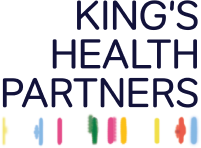29 October 2024
In this personal blog, patient representative Amanda-Jane shares what it was like growing up with a heart condition, and how reaching personal milestones made a positive difference for her.
In 1981, at just three months old, I was diagnosed with Tetralogy of Fallot, a congenital heart condition also known as "Blue Baby Syndrome.".
It was a moment of sheer chance that led to my diagnosis. While being treated for meningitis, Dr Shinebourne, a Paediatric Cardiologist at the Royal Brompton Hospital, discovered my heart condition. Dr Shinebourne performed my first life-saving intervention: the insertion of a modified BT shunt due to a disconnected left pulmonary artery.
Major surgical repair
The early years of my life were marked by countless hospital visits, surgeries, and a childhood quite different from my peers. At the age of three, I underwent a major surgical repair, which involved a reconstruction of my pulmonary artery. More surgeries followed as I grew, with a major one at age 14 to replace my right ventricular-to-pulmonary artery (RV-PA) conduit. Each procedure marked a critical milestone in my health journey and a step towards living a fuller life.
In my teenage years, my heart condition continued to present its challenges, but I didn't let it hold me back. Despite the limitations—like being exempt from P.E. at school or having to give up gymnastics training for the Olympics—I found ways to move forward. One of the hardest things I had to hear was that I couldn’t continue with gymnastics, a sport I loved. The fear that the intensity of training would be too much for my heart crushed me, but I knew I had to prioritise my health.
Milestones
Adulthood brought its own set of milestones, both medical and personal. In 2010, I underwent a VT ablation procedure and had an Implantable Cardioverter Defibrillator implanted for primary prevention of heart complications. More stents and valve replacements followed over the years. Yet, amidst all this, I found joy and independence in ways I never expected.
At age 25, when my heart condition had stabilised, I seized the opportunity to travel and work abroad. For two years, I worked as a nanny in the French Alps and the South of France, and I even travelled to Switzerland and Italy with families. Those incredible experiences allowed me to see the world, meet new people, and enjoy life.
My miracle
At 28, life threw me another surprise. I found out I was pregnant—something I had been told was unlikely due to my medical condition. My shock was followed by a whirlwind of medical appointments, including seeing Prof Steer, a consultant obstetrician specialising in heart conditions, at Chelsea & Westminster Hospital. Against all odds, I now have a healthy 14-year-old son. He is my miracle and my motivation to keep pushing forward every day.
Over the years, I’ve learned that living with a chronic heart condition can be isolating at times, but it doesn't have to be. I have found support in unexpected places. Hospital visits connected me with others in similar situations, and social media, especially Facebook groups, became a lifeline. Sharing experiences with others who truly understand what it's like to live with a heart condition made all the difference.
The importance of accessible information
When it comes to support, I believe there is still much that can be done. More patient-friendly resources are needed, especially before procedures. Receiving a medical letter full of jargon isn’t always helpful; instead, clear and accessible information, ideally written by patients for patients, could make a world of difference.
To anyone who has recently found out their baby has been diagnosed with Tetralogy of Fallot or a similar condition, or you have been diagnosed in adulthood, my advice is simple: don't panic and don’t immediately turn to Google—it can be overwhelming. Instead, find online communities and talk to others who have been through it. Write down questions for your doctors and bring your family into the conversation, so they too can understand what you're facing.
Find out about the KHP Cardiovascular and Respiratory Partnership.
Want more news like this in your inbox? Sign up to the KHP Newsletter here.





